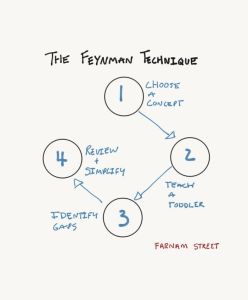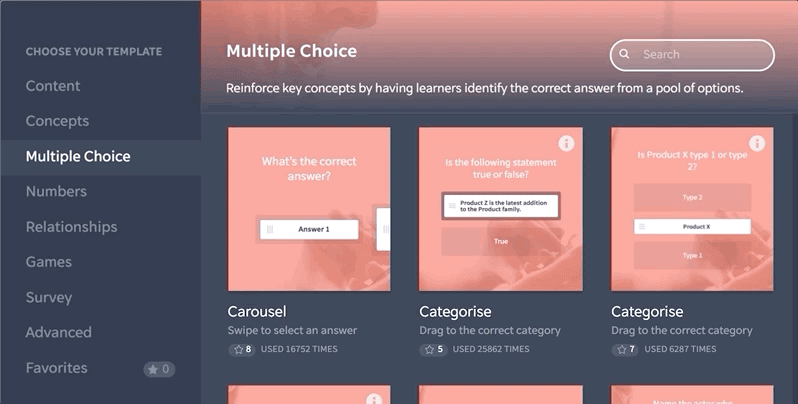Expert is Making a Complex Easy to Understand
Our lives are ruled by complex concepts and learning, which only seem to complicate and expand the closer we examine them. From a psychological perspective, complex concepts are not easy to unpack. They can evolve from primitive concepts and categorization. But, as many thought leaders have pointed out, even the most seemingly simple objects or concepts can be interpreted as complex by definition. If you've taken Philosophy 101, you might agree. Suddenly the words "bird" or "table" have taken on a life of their own, negating every assumption or concept you know (or thought you knew) to be true.
But in the context of learning, how do we unpack and teach a complex concept? Especially given the proven results of microlearning, where small bursts of key concepts are preferred rather than extensive and hyper-detailed teaching, how can more complex notions be delivered to the modern learner? And how can this be done without overwhelming and confusing the learner? Let's explore.
What is a complex concept?
A complex concept is made up of intricate and interconnected ideas that require a deeper cognitive process. It's not as simple as black and white and can take more effort to take apart and fully understand as it consists of several parts. This can be mostly seen in the sciences, philosophy, maths, and art, and often requires certain expertise and knowledge of jargon to comprehend. Take for example Einstein's theory of relativity or Jean-Paul Sartre's concept of freedom which cannot simply be explained in just a few words. Half of the battle is understanding complex concepts but the real challenge is getting your message across to learners and everyday audiences. As an educator or L&D professional, it is your job to simplify these complicated concepts and communicate them to learners in such a way that they can grasp them and apply this knowledge in their lives.
What are learner behaviors?
Simply put, learner behaviors are what interest and motivate a student to gain new knowledge. It is the result of a multitude of factors, such as their upbringing, relationship with others, and their environment, rather than simply a student's desire to behave or study. Learner behaviors can be introduced and corrected if needed to accelerate the learning curve and maximize a learner's potential. According to the Behaviorism learning theory, learning is strengthened through repeated action, and therefore, having a systematic routine where knowledge is revisited repeatedly will undoubtedly reinforce learning. Understanding learner behavior is essential for the success of employee training as it helps in designing and executing a more engaging and personalized learning experience.
Complex concepts
The most effective way to teach a complex concept is by identifying what is the most complex and take the time to understand it, before communicating it to your learners. Once you've identified the concept, break it down into its most simple steps. There is no need for long words or complicated definitions. Instead, just an easy explanation of the components that make up the complex concept.
The instructional designers at EdApp, who are experts in creating engaging microlessons, recommend not overthinking it to keep it simple. Bear in mind that the delivery of your learning content should straight to the point, and void of any unnecessary "fluff", which can be challenging if you're new to microlearning and accustomed to drawn-out PowerPoint presentations. At a loss of where to start? EdApp has a completely free PowerPoint converter that will automatically transform your dated PPTs into beautiful microlessons within minutes.
Difficult concepts inevitably vary in their degree of complexity meaning that different approaches should be taken to tackle different concepts. However, one thing that doesn't change is the ability of teachers to maintain their well-explained concepts, regardless of how complex they may be.
Start Teaching Complex Concepts to your learners today
Sign Up Free
No credit card required.
The Big Short film
Still, think it might be too difficult to simplify your complex concept? Take Dawid Naude's Medium article, which draws on an example from the film, The Big Short (2015) in which a complex financial instrument is explained using the game Jenga. This complex example was hardly understood on Wall Street, exemplifying that while there is a complex concept, there can be a simple explanation. In this clip, the CEO calls out for a clear explanation and to "please, speak as you might to a young child. Or a golden retriever." The ability to strip down complex concepts into clear, concise micro lessons is key.
Communicating complex ideas simply with the Feynman Technique
Naude also touches on the work of physicist, Richard Feynman, known as "The Great Explainer". The Noble Prize winner's achievements spanned great lengths, however, he was particularly proud of his ability to communicate the most complex of topics in the most comprehendible way, that is as simple in nature, as possible.
Farnam Street produced a helpful and simple diagram (suitable, right?) to understand Feynman's practice.

So, how?
The four steps Feynman took to communicate complex ideas simply were driving tools for his success, despite how simple they may seem. These four steps will help guide you through the specifics of simplifying your complex concept.

1. Identify the topic and conduct research.
Gather as much information as you can find on your particular topic and write down what you aim to discover.
2. Dissect the information to understand and explain it simply.
Link parts of information with other parts to find connections and reasoning. How do the concepts link?
3. Find gaps in learning and the areas you need to review to build on knowledge.
Clear up the mess of information, neatly sorting it into respective components. Identify gaps in certain areas of knowledge and continue to research them for a holistic understanding.
4. Time to simplify! Design the information as if it were to be explained to a six-year-old, using examples and analogies.
Imagine you're teaching Quantum Physics as Feynman did, or the first 100 digits of Pi to a six-year-old. Yes, a six-year-old. In order to do this, it is essential to systematically break down the information into parts that are almost too easy to explain and understand. This will simultaneously benefit your ability to understand it, as well as teach it.
And voila, Quantum Physics becomes as easy as pie. Not Pi unless the Feynman technique is involved.
How do you communicate complex ideas simply to those who may not understand?
Here's when you pull out the big guns. How to communicate the teaching to learners in the most effective and productive way. Microlearning!
If you're unfamiliar with the method, microlearning is the breakdown of information into digestible, bite-sized pieces for the simplification of information for learners' maximum absorption and retention of complex information. Sound familiar? Microlearning is accessible through 3-5 minute short modules within which the course content is released in small bursts at particular intervals, known as spaced repetition. Gamification is also utilized in the execution of microlearning to engage learners and boost productivity, further simplifying complex concepts into a comprehensive form.

If you would like to learn more about how to communicate complex ideas simply with EdApp!
If you'd like to know more about how EdApp's mobile elearning platform can help your internal training practices, get in touch at enquiries@edapp.com. Ready to test out your skills to deliver complex concepts to your cohorts? You can also use EdApp's completely free, award-winning LMS by clicking here.
Sources
Header image and video clip courtesy of Youtube: 'The Big Short – "Jenga" Clip (2015) – Paramount Pictures'. Paramount Pictures Corporation (PPC).
Farnam Street: 'Feynman Technique'
Medium: Dawid's Blog
youngbloodwitally.blogspot.com
Source: https://www.edapp.com/blog/what-is-a-complex-concept-and-how-do-you-teach-it/
0 Response to "Expert is Making a Complex Easy to Understand"
Post a Comment